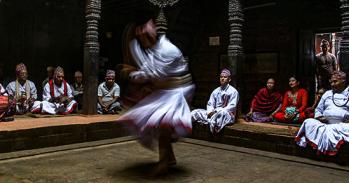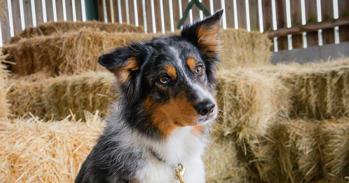
In the latest report of the Extreme Sleepover series, undergraduate Robin Irvine explains how a fascination for the relationships between humans, horses and dogs took him to the Mongolian steppes.
In the latest report of the Extreme Sleepover series, undergraduate Robin Irvine explains how a fascination for the relationships between humans, horses and dogs took him to the Mongolian steppes.
Long distance horse racing has boomed in Mongolia in the last few decades and the lush grazing in the East is renowned for producing the fastest horses.
Robin Irvine
I had not been this cold in ages. My deel, a traditional Mongolian garment not unlike a silky patterned bathrobe, had protected me from being burnt by the sun earlier, but it felt flimsy against the night air. Lying on my saddle-pads for insulation with my head resting against a hard wooden saddle, I contemplated the journey that had brought me to this volcanic crater in South-Eastern of Mongolia, on the border with China.
There was something about Shilin Bogd, the mountain rising above the crater where we slept, that had intrigued me. Shilin Bogd is a holy mountain where men can replenish their inner khiimor or 'wind-horses'. This trip was a chance to show my appreciation for the opportunities Mongolia had given me while exploring a concept central to my research on horse-dog-human relations in rural Mongolia. In Cambridge I had saved up my student loan and squeezed in Mongolian lessons between lectures. Now it was exhilarating to have a diary full of interview notes and a camera full of photos.
Ganbat, my host and guide, and I had ridden 70km over five hours that morning, stopping only for tea and water. According to Ganbat, I was learning to ride like a shilin sain er or good shilin man. In the past these men were highly regarded for their feats of endurance, rustling horses over vast distances. Praised for their toughness, they were 'good' in the sense that they acquired their horses from afar, never stealing locally. They epitomise the ideal Mongolian man, putting his animals' health before his own and with great knowledge of the steppe environment.
I had been looking at how Eastern Mongolians were bringing in new breeding horses. Long distance horse racing has boomed in Mongolia in the last few decades and the lush grazing in the East is renowned for producing the fastest horses. Today, introducing new breeding lines means importing horses of Arab and thoroughbred descent from Russia. I want to find out how this fresh wave of cross-breeding articulates with Mongolian notions of nationalism and purity. I am also looking at how Mongolians experience their relationships with horses and dogs, through cross-species concepts like khiimor, originally a Buddhist notion that is locally associated with luck, spirit and willpower. Just as there are rituals for men to replenish their khiimor, so there are rituals to raise the spirits of a 'depressed' horse.
Rising before dawn to climb Shilin Bogd to see the sunrise, I felt revived despite my lack of sleep. There were other visitors on the mountain, tossing their offerings of rice, vodka and sweeties onto the huge ovoo (cairn) at the top, as the light flooded the sea of grass below us. The horses were also perky, having spent the night grazing. They were travelling on full bellies; but like true shilin sain er we were not, a swig of vodka from a fellow pilgrim, a handful of cereal from my saddlebags and we were off.
That night on the steppe taught me to appreciate the shelter afforded by the Mongolian ger (yurt). Ganbat and his wife, Olziisaikhan, share their tiny summer ger with six sons and yet managed to accommodate and feed guests. Later, my translator helped me check with Ganbat that I’d grasped everything he had told me and that I’d understood elaborate concepts that were way beyond my rudimentary Mongolian. As I savoured a large bowl of noodles with mutton and steppe herbs, I felt one step closer to understanding how Mongolians relate to their animals and their landscape. I was putting into practice the anthropological theory I'd been learning in Cambridge in between long hours learning to herd and immersing myself in horse-talk.
My trip gave me a sense of how the landscape still encompasses the Mongolians and their animals. They regard the natural environment as something to work with and within: a kind of reciprocal relationship. As Mongolia enters a financial 'golden era' on the back of huge transnational mining investment, this perspective of humans as part of the landscape, rather than dominating it, poses some urgent and challenging questions – and not just for Mongolia.
Robin Irvine
Robin is in his final year as an undergraduate studying anthropology at Corpus Christi College. Before he came to Cambridge he spent several years working with Clydesdale and Shire horses at Cumbrian Heavy Horses in the Lake District. His fieldwork in Mongolia was supported by the Worshipful Company of Cutlers and the Corpus Christi College Long Vacation Travel Grant.
This work is licensed under a Creative Commons Licence. If you use this content on your site please link back to this page.





